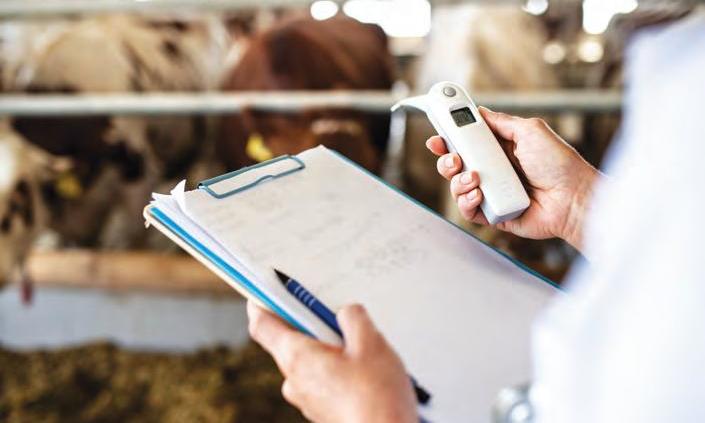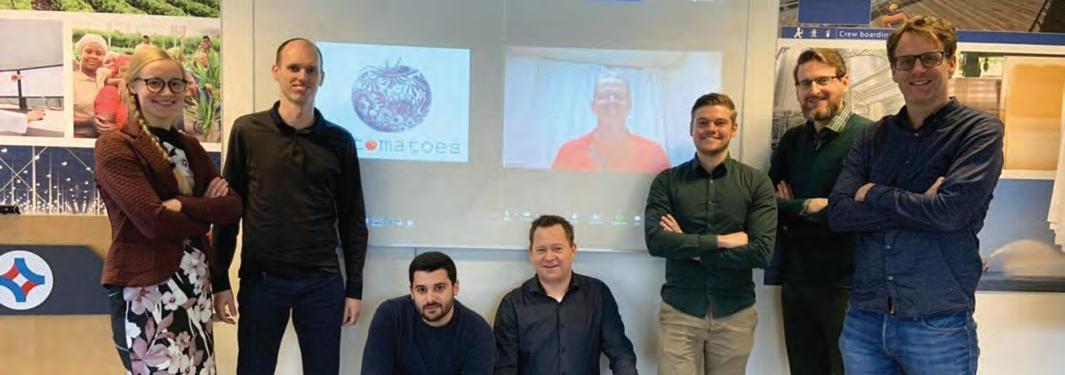
27 minute read
Crops
The Autonomous Greenhouse Challenge, organised by Wageningen University and Research (WUR) in the Netherlands, aims to remotely grow large quantities of cherry tomatoes of good quality with minimum use of resources.
Growing better with plant feedback
Team Au Tomatoes
WAGENINGEN UNIVERSITY’S AUTONOMOUS Greenhouse Challenge aims to maximise the yield and quality of the crop while minimising the use of resources, to save costs.
The challenge is progressing well for team AuTomatoes, consisting of consultants, data scientists, engineers, researchers, and students from TU Delft, Van der Hoeven Horticultural Projects, KeyGene and Hoogendoorn Growth Management. They harvested their first tomatoes, and the results still look promising.
The team started with the growth plan they developed in the preparation phase. Based on the incoming data and their collective knowledge, the team is constantly adjusting their growth strategy to maximise the results. The data is used to adjust algorithms and develop different and new techniques, in order to create more optimal greenhouse controls, and thus more optimal growth conditions and greenhouse climate.
According to Hoogendoorn data analyst
According to Hoogendoorn data analyst and AuTomatoes team member Evripidis Papadopoulos, “We started with a robust strategy and became flexible based on the plants’ feedback, making our strategy agile.”
and AuTomatoes team member Evripidis Papadopoulos, this is working very well. ”We started with a robust strategy and became flexible based on the plants’ feedback, making our strategy agile. We constantly work to empower the plants and maintain the plant balances in order to maximise quality, quantity, taste and resource use efficiency.”
KeyGene translates plant behavior into valuable data by means of, amongst others, cameras. This data is used by Hoogendoorn to improve the algorithms used to control the growth factors, in order to optimise the greenhouse climate according to the plants’ needs. Combined with the applied and fundamental knowledge of Van der Hoeven and TU Delft, the team possesses the multidisciplinary knowledge needed to succeed in the Autonomous Greenhouse Challenge. h
To help the world produce nutritious and highquality food in a sustainable way, Nutreco has committed to adopt Science Based Targets.
The aim is to provide high-quality food to a growing population in a sustainable way.
The initiative is in line with the company’s drive to achieve its mission of Feeding the Future.
Nutreco has joined the global ranks of 850 other leading companies by signing a letter of commitment with the Science Based Targets Initiative (SBTI) indicating that the company will work to set a science-based emission reduction target. A global collaboration between CDP, the World Resources Institute, World Wide Fund for Nature and the United Nations Global Compact, the SBTI champions science-based target setting to boost companies’ competitive advantage in the transition to a low-carbon economy.
The SBTI is helping companies to align their carbon reduction strategies with the objectives of the 2015 Paris Agreement, and we’re pleased to join the initiative, together with other companies that are leading the way,” said Nutreco CEO Rob Koremans.
According to the SBTI process, companies first publicly commit to setting Science Based Targets (SBT). After that, they have two years to set reduction targets for Scope one, two and three CO2 emissions: Scope one relates to Nutreco adopting Science Based Targets
energy generated on-site, Scope two relates to energy purchased and Scope three covers energy use that takes in the supply chain. Finally, participating companies pledge to report on their progress annually.
Nutreco sustainability director José Villalon said, “If grocery retailers commit to SBT, this means their meat suppliers must submit their CO2 reductions each year, and on down the value chain to feed and finally premix suppliers. So, eventually, companies across the chain will need to get on the SBT bandwagon to maintain their relationships with customers, helping to drive change throughout our industry.”
The flower farms in Kenya and neighbouring areas are introducing innovative solutions ranging from bio - stimulants to drone technology . Mwangi Mumero r eports.
Boosting East Africa’s flower power
WHILE THE FLORICULTURE industry in East Africa is going through the devastating effects of the COVID-19 pandemic that has affected its global markets, experts expect a quick recovery, once a vaccine is found.
More than 65 per cent of the exported Kenyan flowers pass through the Dutch auctions before finding their way into European supermarkets and homes.
“Kenya controls 38-40 per cent share of the European market. Currently, we grow 110 varieties of flowers – with roses being the most popular with customers at 85.6 per cent, carnations at 2.5 per cent and alstroemeria at 0.73 per cent," observed Clement Tulezi, the Kenya Flower Council (KFC) chief executive.
And with regular flights connecting Nairobi with Chinese cities and other Far Eastern countries, some flower exports are destined there. Others are sold through Dubai in the United Arab Emirates (UAE).
The sector employs more than 500,000 people in Kenya- becoming a critical component of the local economy.
In 2019, the flower sector earned the country US$1bn and is one of the major foreign exchange earners. It is a good revenue earner for the government through taxes and levies.

“We utilise fish wastes such as guts, fins and the head to manufacture biological fertilisers that enhance soil aeration, ameliorates soil conditions and moderates soil pH,” said Mia Metcalf, director of the Eco-Group East Africa.
Setting trends
In the last couple of years, new technologies and innovations have been rolled out to boost flower production, reduce costs and improve efficiency in the sector.
These include soil nutrients and related
New technologies and innovations have been rolled out to boost flower production, reduce costs and improve efficiency in the sector.
materials, drone technology, mobile apps and energy saving solutions among others.
For instance, global agribusiness firm Syngenta has introduced a new biostimulant that increases the quality and viability of flowers in Kenya. Known as ‘Hicure', the product has been tested in greenhouses of the main floricultural regions of Naivasha, located in Kenya’s Rift Valley and in Thika, Central Kenya.
“Use of this product for flower plants increased the quality and quantity of plant tissues in terms of increase in length of the stem, bigger buds, less flush periods and improved shelf life," observed Victor Ouma, Syngenta business manager for East Africa,
during the product launch in Nairobi, at the end of 2019.
According to Ouma, this product will help farmers boost their supplies and project higher profits and increased flower sales.
Another player that has been introducing innovations into the flower sector in Kenya is Eco-Group East Africa, a Kenyan company which has sourced its technology from the USA.
“We utilise fish wastes such as guts, fins and the head to manufacture biological fertilisers that enhance soil aeration, ameliorates soil conditions and moderates soil pH. It revitalises exhausted soil, reducing its sodium content in the process,” observed Mia Metcalf, the director of the Eco-Group East Africa, at an interview with African Farming during a flower fair held earlier in Naivasha.
These products – named Soil Oxygen Supplement (SOS) and Liquid Plant Nutrient (LPN) can be used to boost existing soil fertility correcting deficiencies as well as improving soil structure. This will, in turn, allow deeper water penetration and increased use of stored water.
According to Metcalf, their products target roses and vegetables in commercial units and for smallholders. Their productsin liquid formulations- can be applied through drip irrigation systems or in foliar forms.
Jack Van Batenburg of the Dutch company Shakti Cocos – previously with Mega Substrates, has also introduced new growth media to prospective flower growers in one of the horticulture expos held in Kenya to showcase industry trends. Growth media is a material used to plant crop as a substitute for soil.
With water being the biggest problem for growers in sub-Saharan Africa, Batenburg observed that substrates provide the best solution for growers in hotter regions.
The firm uses coconut husks to produce substrates known as 'cocos' – which is a growing media.
“Substrates have a high water retention capacity, a high nutrient retention ability and are able to hold huge amounts of air. They are best suited for area with weak soils in these aspects”, noted Batenburg, the coco specialist at the company.
He noted that substrate usage depends on the crop to be grown, the soils and climatic conditions of the area.
With its huge dependence on coconuts in making of substrates, the Dutch company has two factories in Kerala, India and in Sri Lanka- two areas reputed for their large coconut plantations.
Meanwhile, an Israeli firm Cargolite, has also introduced into the market, a technology that improves transportation of flowers by removing the load from carton walls, reducing the carton weights as well as increasing the packing rate, while improving stackability.
“With the new technology more stems can be packed with the weight considerably reduced. It also improved stackability – allowing the flowers to arrive at their destination without damage,” said Guy Symondson, Cargolite’s East Africa representative during a recent flower fair in Nairobi.
With flower production processes becoming even more sophisticated, new management systems were also on show. These solutions are expected to help growers and exporters to manage their activities.
“This software helps growers to manage their activities online. Finance, crop history, auditing, harvesting, costing, quality control and compliance can be captured and managed through this software, availing needed information in real time. It can be customised to the grower’s needs and will track every aspect in all operations in real time,” said Kelvin Gachari, a project manager with Muddy Boots Software, a Kenyan company.
The software costs US$1300 which includes set up, user training and one-year support.
Water solutions
Specifically, clean energy solutions expected to help reduce the monthly bills attract an enthusiastic crowd during flower fairs. Among them is the solar water pumping system.
“This solar pumping system fulfils the concept of low carbon, energy conservation and environmental protection. It can be effectively utilised in irrigation systems and can be remotely controlled,” said Eugene Reeksting, of the Laser Engineering Solutions, the company which produces the solar irrigation system.
The unit consists of solar panels, solar pumping inverter, three phase AC pump and a water storage device. It uses solar energy to pump water from a borehole, dam or river directly to an irrigation system or a storage tank.
Water availability and sources for agriculture proved an important area for developers of smart farming solutions.
“Our solutions are able to collect information on underground water sources available to farmers. They can also advice farmers on soils and synchronise data in relation to water and climate information," observed Andrew Denu, products manager with Sun Culture, an organisation that develops irrigation solutions.
The company’s ‘Rainmaker 2’ is a solar powered irrigation solution which uses artificial intelligence to collect information on water sources for farmers. The solution can also provide water both for domestic and irrigation purposes.
The firm has developed the ‘Agoptimised farmer Sensor’ app which is available on smartphones.
“The app helps farmers to build weather models, helps in crop yield monitoring, data on pests and diseases as well as map out water sources data," noted Denu during
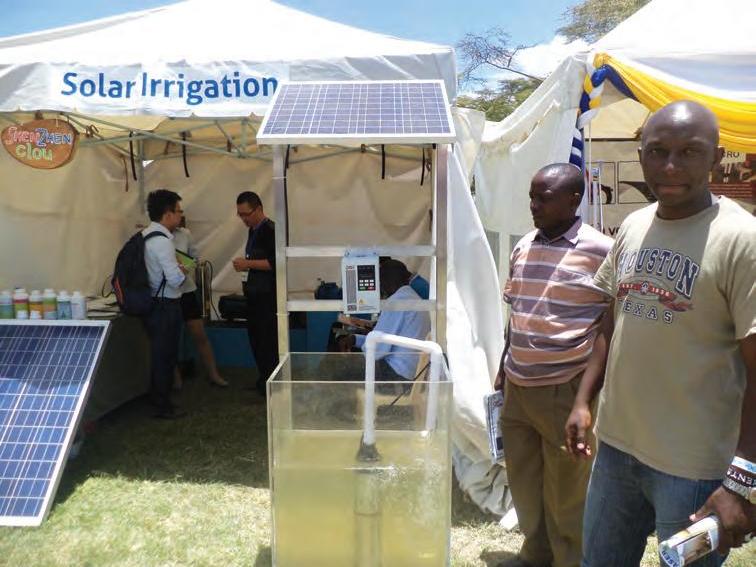
the presentations.
It provides real time data on possible drought conditions, and is valuable for government and development organisations, especially those with activities in arid and semi-arid regions.
Drones for floriculture
Experts say that a drone has more than 10 times accuracy in detecting pests and diseases than the human eye. They are capable of collecting high resolution images, as well, which are useful in mapping and surveying farms.
Already, a pilot project initiated by the Netherlands Development Agency (SNV) in partnership with Kenya’s Jomo Kenyatta University of Agriculture and Technology (JKUAT) and Third Eye Company, a solution provider is helping farmers in Meru county to conduct disease surveillance on their farms.
“Drones are able to detect crops and diseases 10 days earlier than extension officers could do. They diagnose stress levels in plants early, helping planning and reduce the amount of pesticide use in crops,” said Dr Bancy Mati, a researcher at JKUAT offering technical knowledge for the project.
Third Eye Company officials say that the sensors in the drones can take up to 20 samples per day.
The drone technology is particularly useful for flower varieties grown in the open fields – outside of greenhouses.
With the lucrative nature of flower farming, cutting costs through early detection of water stress, diseases and pest would be critical, according to experts.
“Use of drones can cut the use of pesticides by between 20 and 25 per cent given it only addressees the area of concern. This helps to conserve the environment”, observed George Madjitey, a Ghanaian drone expert.
Ghana and South Africa are among the African nations that have taken up the drone technology in their farming activities.
Drones technology that has increasingly been accepted in many fields across Africa is proving vital in reducing costs of productions among farmers.From imaging, pest and disease surveillance, crop spraying to scattering birds in rice field, drones are now part of food production across the continent.
East African flower industry
While Kenya is the chief source of cut flowers from East Africa for the international markets, regional nations of Rwanda, Burundi and Ethiopia are coming up as viable competition.
The Rwanda flower markets doubled in worth in the 2017-2018 fiscal year to US$2.8mn compared to the US$1.2 mn in the 2016-2017 period, according to the National Agricultural Export Development Board (NAEB).
Ethiopia’s flower income was worth US$212mn, according to the Flower Bouquet Export ratings.
Over the last two decades, there has been heavy investment in the flower sector by the government and private investors. Flower growers in Rwanda and Burundi have been instrumental in the development of new flower varieties. The flower, Heliconia, that has been grown in Burundi by private growers has now been taken up by Kenyan and Ethiopian flower farmers. h
Equinom transforming global sesame sector
GLOBAL SEED BREEDING specialist Equinom has developed cultivation methods that are set to boost the production and trading of sesame, thus ensuring profitability and increased market stability across the globe.
As part of its broad sesame development plans, Equinom has signed contracts with major grain handlers and international food companies to grow and commercialise its smarter sesame varieties in Africa, South America, Europe and the rest of the world. Results so far include the introduction of a fresh influx of land now dedicated to the cultivation of sesame totalling 100,000 acres worldwide to meet burgeoning demands. New growers in the US and Australia are adopting cultivation of sesame locally.
Under the plan, traditional growers benefitted from Equinom's non-GMO seed varieties to scale up production and broaden existing locations for growth.
Driving accurate production and profit forecasting
“The world sesame market is currently worth almost US$10bn,” said Gil Shalev, CEO and co-founder at Equinom. Equinom's varieties aim to enable farmers to generate more accurate and pre-defined yields. This leads to more precise profit forecasting and assessments that greatly facilitate the execution of prospective contracts, providing all partners
Equinom has developed sesame with high-yield capabilities and superior nutritional profiles.
— grain handlers and farmers — with a safety net, by keeping supplies and prices stable.
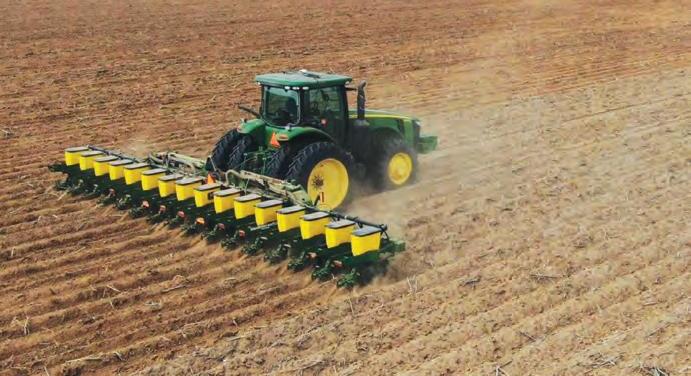
Food security and stability during COVID-19
“The sesame industry is, by nature, prone to fluctuations and that makes it difficult for key parties in the supply chain to meet pledged output quotas,” explained Shalev. “Our solution removes a lot of the risks associated with yield inconsistencies and grants stakeholders a new sense of assurance. Even in times of crisis — such as with the current COVID-19 pandemic — food companies can rely on a secured supply of sesame. Right now, amid the outbreak, it is 'business as usual' for Equinom. We are currently drafting new work plans to propel the industry despite the challenging border closures and transportation hurdles.”
Equinom has developed sesame with highyield capabilities and superior nutritional profiles. It can be tailored to a variety of innovative and commercial products, including baking, confectionary, tahini, oil and flour, encompassing parameters of oil concentration, protein load, flavour and sensory qualities contributing to more uniform products.
A study on weed genetics provides insights for sustainable management strategies.
Weeds have major agronomic and environmental impacts , which affect food security.
Breakthrough in the war on weeds
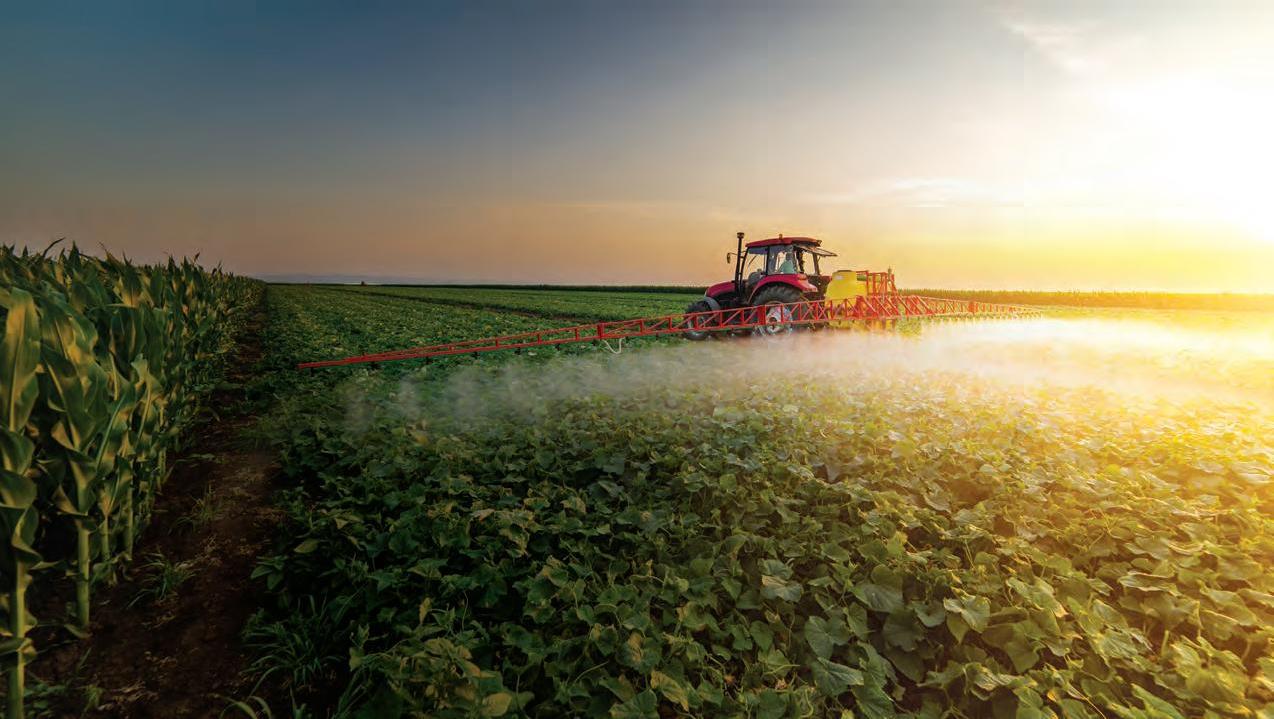
SCIENTISTS AT ROTHAMSTED Research in England have successfully adapted genetic techniques developed for crop improvement to be used in weeds, offering possibilities to directly study the genetics responsible for herbicide resistance. The group report in the journal Plant Physiology, shows they have used plant viruses to switch weed genes off, or, alternatively ramp up the production of specific proteins by weeds in the laboratory.
This means that these researchers can now directly show that a specific gene is required for herbicide resistance, or else is sufficient to confer it.
Lead researcher Dr Dana MacGregor described the research as a ‘gamechanger’ for weed genetics.
Her latest study focuses on blackgrass, a major weed of cereals and a previous joint study involving Rothamsted, showed that herbicide resistant black-grass could cost £1 billion every year in the UK alone.
While researchers have previously identified genes that are over-represented in black-grass populations with herbicide resistance, they have been unable to show that the genes they have identified are even involved - or understand how they provide resistance in the plant.
“Weeds are arguably one of the most
“To be able to design and deploy weed management strategies that are both effective and sustainable, we must first understand what genes allow black-grass to avoid the current control practices,”observed Dr Dana MacGregor, lead researcher.
economically important groups of plant species. They have major agronomic and environmental impacts and affect food security. To be able to design and deploy weed management strategies that are both effective and sustainable, we must first understand what genes allow black-grass to avoid the current control practices.
“These virus-mediated techniques allow us to bring black-grass into the lab and ask questions about how specific genes work like we have never been able to before,” said Dr MacGregor.
The team used two methods, the Virus – induced gene silencing (VIGS) and Virus – mediated overexpression (VOX) that were developed for studying crop plants, with both taking advantage of the pathways plants and their viruses use to fight one another.
This work was supported by the Smart Crop Protection Industrial Strategy Challenge Fund and the Biotechnology and Biological Sciences Research Council, part of UKRI. h

Dr Benoy Berry, chairman, Contec Global speaks to African Farming, about the company's role in transforming agricultural practices through biotechnologies.
Organic farming driving change in sub-Saharan Africa
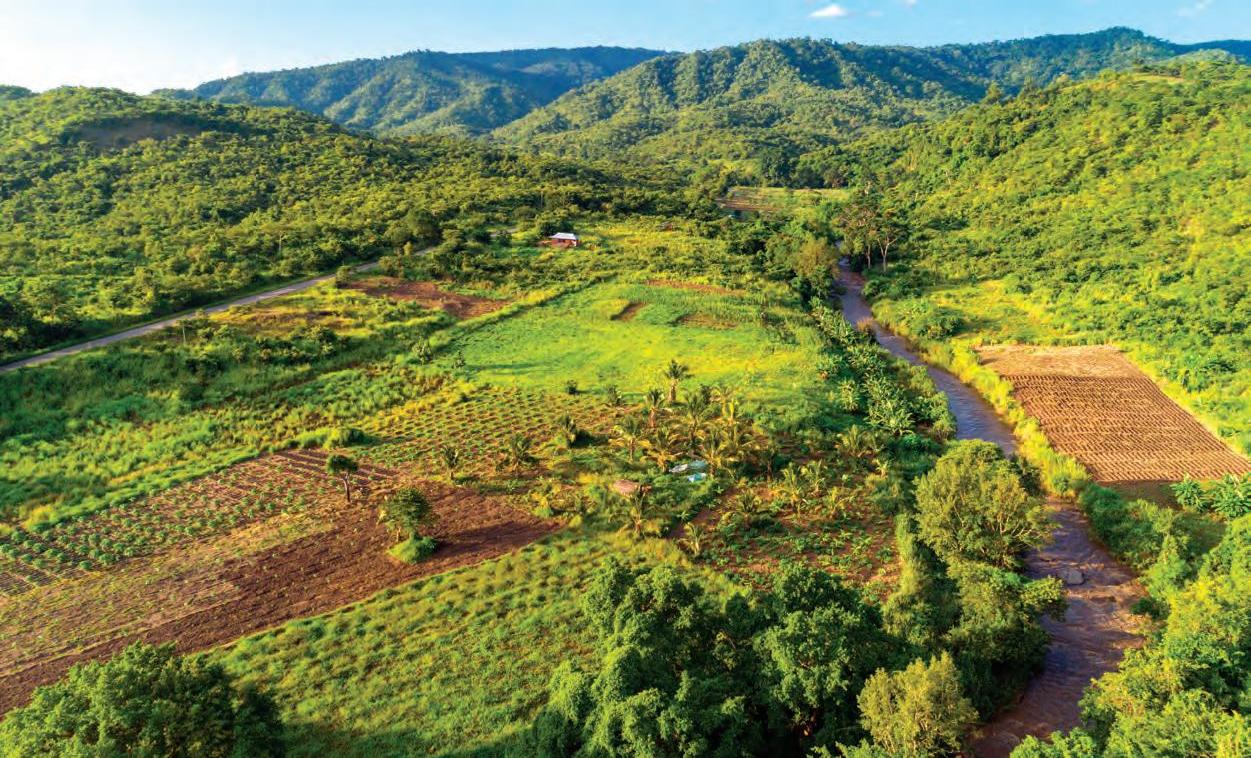
OVER THE NEXT 30 years, half of the world’s population growth will take place in Africa. The implications for African countries range from the need to rapidly develop essential infrastructure, to the provision of jobs for millions entering the workforce. One of the greatest challenges presented by this trend relates to food production, as governments are having to consider how to effectively oversee the provision of food for rapidly increasing populations.
According to the African Youth Survey 2020, there is a trend of optimism among young people in Africa, with 82 per cent of respondents confident their standard of living will improve in the next two years and 81 per cent predicting technology will be the main driver of their changing fortunes. Technology – and specifically biotechnology – is central to finding a solution to the food supply question. Technologies can help a growing population better afford improved land and resource management, while providing more sustainable livelihoods.
Ecosystems are under growing threat across the planet, and especially in Africa,
Organic farming has already considerably changed the face of rural employment and job security across Africa.

where crops continue to be jeopardised by extreme weather, desertification and soil erosion. As a result of industrial farming practices and poor land management, the degradation of the earth’s soil is ubiquitous and too easily overlooked. However, the sustainable management of natural resources remains in our hands. Contec Global, a company that focuses on the sustainable advancement of technology in multiple sectors, has witnessed the dramatic economic and sustainable benefits in Africa generated by organic farming deploying biotechnologies. The work of Contec Global encompasses several areas such as biometric technology, agriculture, transportation, mobile and financial technology, telecommunication, and green energy.
Biotechnologies have the potential to address the challenges of diminished natural resources, while diversifying and optimising economic growth in communities that were once obstructed from adopting a sustainable framework.
Contec Agro has developed organic farming products such as bio-seeds, biofertilisers and bio-planting to preserve the land and ensure food security. Its products are used at all stages of farming, including seed treatment, root dipping, soil application, and dip irrigation. As the realities of climate change manifest themselves, the company's tissue culture facility in Abuja – where tissues or cells are artificially grown (bananas, potatoes) – is equipped to address such realities, notably severe droughts.
Tissue culture facilities enable the regeneration of rare plants, trees and medicines in a clean, rapid and sustainable manner while providing the employees of Contec Agro with unique expertise in crop production and diversification.
Technologies driving organic farming are essential if we are to address issues such as low crop production while meeting growing food security challenges across the continent. Modern sustainable practices provide eco-friendly food crops, while encouraging soil rehabilitation and the
long-term productivity of existing crops and pastureland.
Meaningful progress in agricultural production starts with the empowerment of farmers and producers, achieved through providing them with the means and solutions necessary to make the move towards productive organic agricultural practices.The expanded operations of Contec Global in this sector have afforded many farmers a solid source of income as well as transferable expertise, notably in areas that once solely relied on mining as a major source of employment.
That is why the creation of training centres is essential in this process, the benefits of which are clear through the company’s organic agro facility in Abuja, Nigeria, providing skill development of workers.
Organic farming will not only attract a modern and young workforce but increase the productivity and competitiveness of African agriculture as a collective. While the private sector will play an integral role in driving the required changes, government support is also vital.
The structural transformation of the

agricultural sector with government backing is well underway in Nigeria. The Federal Government’s Ministry of Agriculture and Rural Development recently promised to gradually eliminate all chemical fertilisers in agriculture, with the aim of phasing out the presence of dangerous chemical traces in food.
Moreover, Uganda is home to the most organic producers in Africa. An estimated 231,157ha of land are managed organically across Uganda, as agriculture is the East African nation’s most important sector in terms of economic return. This explains why it is usually given the utmost importance in government planning.
Organic farming has already considerably changed the face of rural employment and job security across Africa and will continue to do so in the years to come. It is now time for organic agricultural efforts to be promoted on a global basis as populations continue to grow. By the same token, agribusinesses ought to consider the impact of harsh chemicals on the livelihood of their ecosystems, encouraging the adoption, and access to, sustainable practices. h
Study helping diversify farming of the future
'DIVERFARMING, A PROJECT of The University of Exeter Business School aims to develop and test different cropping systems to increase land productivity and crop quality, while reducing machinery, fertilisers, pesticides, energy and water use.
The most recent research from this project to feature Exeter has shown that two- levels of contracts should be put in place to support crop rotation and sustainable farming, the first level for farmers and the second, between stakeholders within a partnership.
“Our work has shown that understanding the support we need to give to farmers and stakeholders to support sustainable farming keep fields healthy and people fed. Having two levels makes each contract less complicated and easier to follow for all parties involved. With this type of multi– stakeholder partnership, the implementation of crop rotation and other sustainable management practices could be effective, achieving a more sustainable and regenerative agricultural system throughout Europe,” said Stefano Pascucci, Professor in Sustainability and Circular Economy.
The study worked with researchers from Wageningen Univeristy in the Netherlands; Tuscia University in Italy, and the Barilla Sustainable Farming Group, which promotes a partnership between supply chain partners to adopt and diffuse sustainable practices.
The research team recommended a two level approach to implement the crop rotation system that cycles wheat crops, sugar beet, rapeseed, and sunflower.
The first level is a contract to involve farmers with the benefits of crop diversification, including rotation practices such as price, quantity, quality, amount of land, number of years, and locations. The second refers to the collaboration between the stakeholders in the partnership seeking to integrate their supply chains, and the develop the contracts that can be offered to farmers.
Diverfarming is a project financed by the Horizon 2020 Programme of the European Commission, led by the Polytechnic University of Cartagena featuring 40 institutes across eight different countries and worth nearly 10 million euros. It focuses on the challenges of food security, sustainable agriculture and forestry, marine, maritime and inland water research and the bioeconomy.
Achieving high standards in cocoa production starts with understanding what af fects bean quality and continues to the study of consumer trends. Pierre Broun, head of plant sciences for Olam Coffee and Cocoa, speaks to Fyna Ashwath.

The majority of the world’s cocoa is sourced from smallholder farmers in West Africa.
Crafting cocoa quality and productivity
Please tell our readers about the drivers of bean quality. The main drivers of cocoa bean quality are flavour , colour and fat content. These can be influenced by a number of things, from the type of bean as different varieties naturally have different attributes, to terroir as flavour is affected by the soil and landscape in which the beans are grown. How the beans are fermented and dried after harvesting will also have an effect.
Sustainability and traceability are becoming synonymous with quality. When customers buy a high-quality bean, they increasingly expect to be able to trace the origin of that bean to the source and to know it has been grown and harvested in a way that is ethical and kind to the environment. This is one reason why single origin cocoa is popular in the premium market.
In plant science, our job is to identify the different biological factors that impact bean quality and develop solutions that will improve both quality and productivity in a sustainable way. We take a scientific approach to leverage the natural diversity of cocoa beans for consistency and novelty, and test how we can adapt farm practices to improve things like colour and flavour.
What innovations are helping improve bean flavours and colours as well as increasing far m yields? We are doing a lot of work with farming communities to improve cocoa productivity and quality . The majority of the world’s cocoa is sourced from smallholder farmers in West Africa, many of whom have small plots with older or low-yielding cocoa trees. Often yields could be improved through simple farming techniques, but farmers may not always have the skills or resources.
That is why we have trained farmers across Côte d'Ivoire, Ghana, and our other origins in Good Agricultural Practices so they can improve quality productivity on their farms, funded and equipped youth teams to support farmers with tree planting and pruning, and distributed over 1.7 million improved cocoa seedlings to farmers in the last year, all grown in our
own nurseries.
We are also harnessing the power of technology to help farmers. Using the Olam and Farmers Information System (OFIS), we can record the agricultural practices of individual farms and create tailored Farm Development Plans for each farmer to help them make the most of their land. This comes with personalised advice and recommendations to improve quality and yield.
As a foundation, we are training farmers to preserve quality by only fermenting ripe and healthy cocoa beans. Any injury to the beans or contamination of the fermentation mass can lead to flavour defects or butter spoilage. To obtain specific flavour profiles, fermentation time, aeration and temperature may need to be adjusted; we then work with farmers to adapt post-harvest practices accordingly.
Since we are present in all producing regions of main origin countries, we have developed a strong knowledge of local cocoa, which we use to select beans, tailor post-harvest and adjust processing steps, so that we can offer the wide range of flavours, powder colours and butter qualities that our customers expect.
Please tell us more about the 100 per cent Ghana cocoa powder . Our single origin cocoa powder, deZaan D11MG , is crafted with the bold, distinctive flavour of 100 per cent Ghana cocoa beans and can be offered as a fully traceable ingredient. Using our sustainable sourcing platform, AtSource, we are able to leverage detailed environmental and social data to provide unprecedented levels of transparency for our customers at each stage of the supply chain journey.
Sustainability and traceability are becoming synonymous with quality.
What sustainability initiatives has Olam cocoa put in place in the African continent? Last year we launched Cocoa Compass, Olam Cocoa ’s sustainability ambition for the future of the cocoa sector. It commits to improving farmer livelihoods, ensuring all children of cocoa farmers have access to education, increasing tree carbon stock across our direct supply chain.
We are also a dedicated partner of the Cocoa & Forests Initiative in Ghana and Côte d'Ivoire.
We are working with our customers to promote agroforestry in all our managed programmes. Farmers are planting forest and fruit trees alongside cocoa, restoring lost tree cover as well as improving cocoa productivity for farmers and providing them with an additional source of income. Over
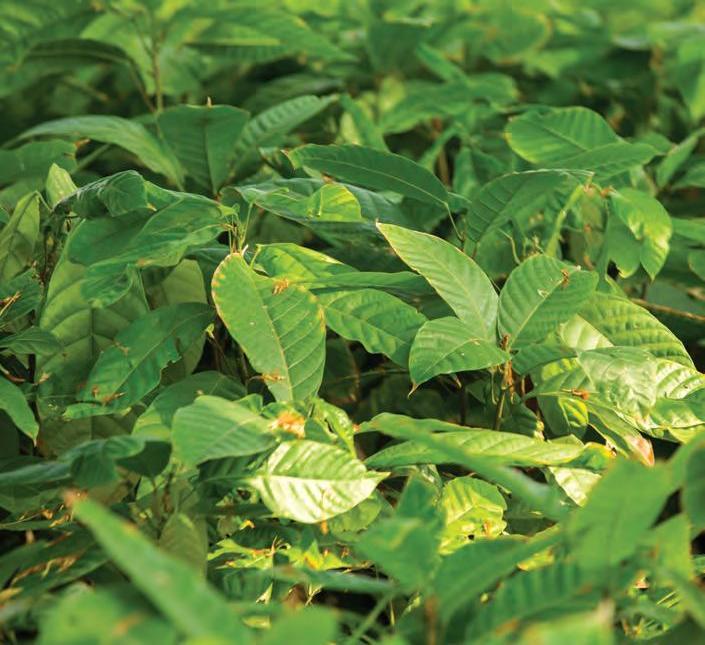
a million new trees were planted in just Ghana and Côte d'Ivoire last year.
In Côte d'Ivoire specifically, we are working with the Ivorian government to protect and restore 460,000 hectares in two classified forests bordering Taï National Park. We have also partnered with Rainforest Alliance to teach school children from farming communities about the adverse impact of deforestation, encouraging them to share that knowledge with their families.
We are rolling out child labour monitoring and remediation systems across all our cocoa origins. we partnered with the Fair Labor Association to introduce the very first professionalised child labour monitoring and remediation to Cameroon, where we worked with local cooperatives to digitally register nearly 7,000 farmer suppliers and their households. h
FAO seeds distribution drive continues in South Sudan
THE UN FOOD and Agriculture Organisation (FAO) has distributed seeds and essential farming tools to 500 households as part of its Emergency Livelihood Response Programme (ELRP) in South Sudan. It is funded by the Governments of the United Kingdom of Great Britain and Northern Ireland (through the Department for International Development (DFID), the United States Agency for International Development (USAID), the Netherlands, Norway, the United Nations Central Emergency Fund (CERF) and the South Sudan Humanitarian Fund.
With restrictions imposed on the movement of personnel and equipment due to the global COVID-19 pandemic, FAO is supporting and working with the government to find new ways to distribute seeds to farmers during the ongoing planting season. Without these seeds, the most vulnerable people could be brought to the brink of famine in the coming months.
This programme was hugely beneficial to people like Jacqueline Tuon, living in northern Bari Payam in Central Equatoria State. A single mother of three, she suffered due to flood during the rainy season, pest infestations and other factors that limited the harvest of people like her. Besides, the desert locusts continue to spell danger for farmers and can lead to an unprecedented threat to food security, for millions across the country. Despite the ongoing Coronavirus restrictions, FAO is committed to reaching 4.8mn vulnerable people in South Sudan, with livelihood support.




